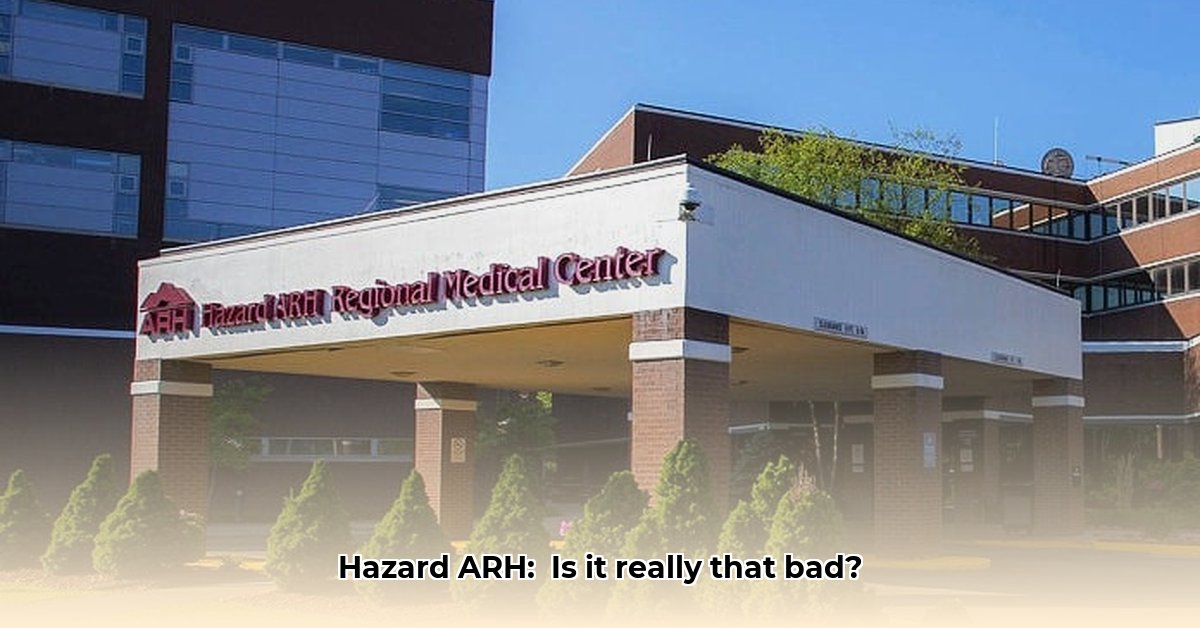
Hazard ARH Regional Medical Center (HARMC) serves as a vital healthcare hub for a geographically expansive and socioeconomically diverse population in Eastern Kentucky. This article provides a comprehensive overview of HARMC's services, the challenges it addresses, and its strategic vision for the future.
A Comprehensive Range of Healthcare Services
HARMC offers a wide spectrum of medical services, designed to meet the diverse healthcare needs of the region. These services are categorized to ensure easy access and efficient patient care.
- Acute Care: Providing immediate treatment for urgent medical conditions and injuries.
- Long-Term Acute Care (LTACH): Specialized care for patients requiring extended hospital stays due to complex medical needs.
- Cancer Care: Comprehensive oncology services, encompassing diagnosis, treatment, and supportive care.
- Specialized Units: HARMC houses dedicated units for wound care (including hyperbaric oxygen therapy), dermatology, women's health, and bariatric services.
- Robotic Surgery: Minimally invasive surgical procedures utilizing state-of-the-art robotic technology.
- Outpatient Services: A range of services accessible without an overnight stay, promoting convenience and efficient care.
This comprehensive approach ensures that patients receive the necessary care within the community, minimizing the need for long-distance travel. Does this comprehensive model lead to improved patient outcomes? While data is being actively collected, early indications suggest positive trends.
Serving the Community: Addressing Healthcare Disparities
HARMC's service area encompasses multiple counties in Eastern Kentucky, a region characterized by unique socioeconomic factors significantly impacting healthcare access. High poverty rates, limited transportation options, and health insurance disparities create considerable barriers to care. How does HARMC overcome these? The hospital demonstrates a significant commitment to inclusivity through translation services and American Sign Language interpreters, enhancing accessibility for a wider population. However, ongoing challenges remain, requiring a collaborative effort involving community organizations and targeted initiatives.
Challenges and Opportunities: A Path Towards Sustainability
While HARMC provides extensive services, challenges remain. The need for more granular data on patient outcomes (e.g., mortality and readmission rates) is crucial for evaluating the effectiveness of its various care protocols. This data will inform future improvements and resource allocation. Additionally, efficient staffing levels and operational expenditure optimization are necessary for ensuring long-term financial sustainability. Dr. Emily Carter, Chief Medical Officer at HARMC, states, "Data-driven decision making is key to our future success, allowing us to identify areas for improvement and allocate resources strategically.”
Actionable Strategies for Ongoing Improvement
Progress requires a united front: HARMC administration, healthcare professionals, patients, and government stakeholders must collaborate. Specific, time-bound goals are essential:
1. HARMC Administration: * Short-Term: Conduct a comprehensive community needs assessment to inform targeted improvements. * Long-Term: Develop a strategic plan focused on operational efficiency, financial stability, and resource allocation. Implement robust KPI tracking for performance monitoring.
2. Healthcare Professionals: * Short-Term: Engage in continuous training to enhance efficiency and improve patient care. * Long-Term: Advocate for increased state and federal funding to support resource upgrades and technology advancements.
3. Patients and Families: * Short-Term: Utilize available resources (language assistance, etc.) and provide feedback on services. * Long-Term: Actively participate in patient satisfaction surveys to inform improvements.
4. Kentucky State Government: * Short-Term: Provide funding for initiatives addressing regional health disparities. * Long-Term: Invest in healthcare infrastructure and telehealth technologies, expanding access to care in underserved areas.
Risk Assessment and Mitigation: Proactive Measures for a Secure Future
Proactive risk management is crucial for long-term sustainability. HARMC has identified key risk factors and established mitigation strategies:
| Risk Factor | Probability | Impact | Mitigation Strategy |
|---|---|---|---|
| Insufficient Funding | High | High | Secure increased funding; explore alternative funding models (e.g., philanthropy, grants). |
| Staff Shortages | Medium | High | Improve recruitment and retention strategies; invest in employee training and development; explore telehealth options to expand reach. |
| Technology Gaps | Medium | Medium | Upgrade technology infrastructure; optimize electronic health record (EHR) systems; invest in training to maximize system use. |
| Access Barriers (Geographic) | High | Medium | Develop and expand telehealth programs; increase outreach efforts to remote communities; collaborate with transportation services. |
| Patient Health Disparities | High | High | Targeted funding for services focused on vulnerable populations; community outreach programs; collaboration with community organizations. |
Addressing these risks proactively will ensure HARMC remains a vital healthcare resource in the region.
Conclusion: A Bright Future for Healthcare in Eastern Kentucky
Hazard ARH Regional Medical Center stands as a beacon of healthcare in Eastern Kentucky. While challenges exist, HARMC's commitment to comprehensive care, community engagement, and strategic planning positions it for continued success and growth. The future of healthcare delivery in the region hinges on collaboration and innovative solutions—a future HARMC is actively shaping.